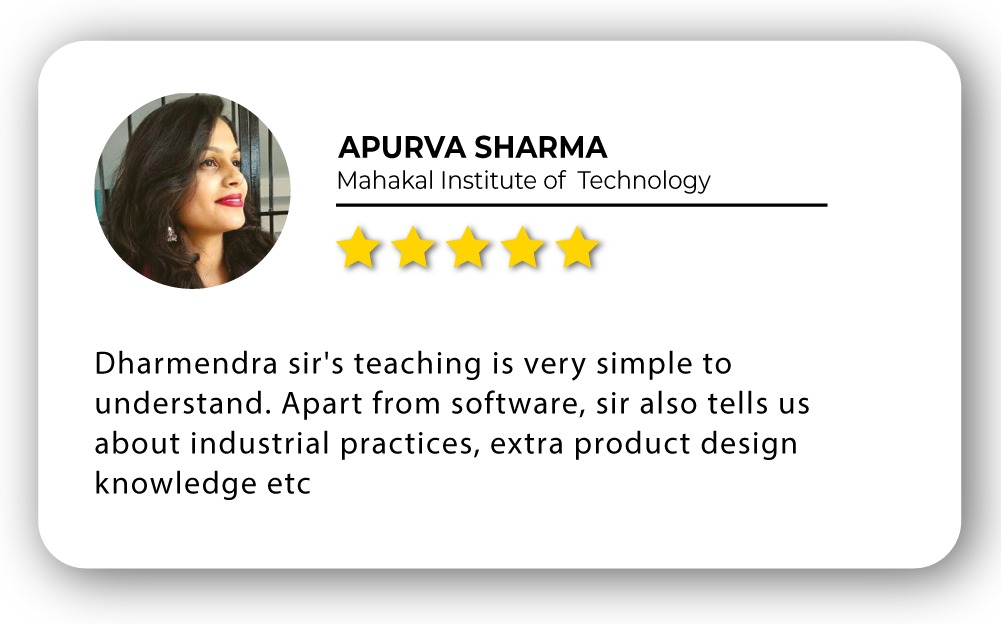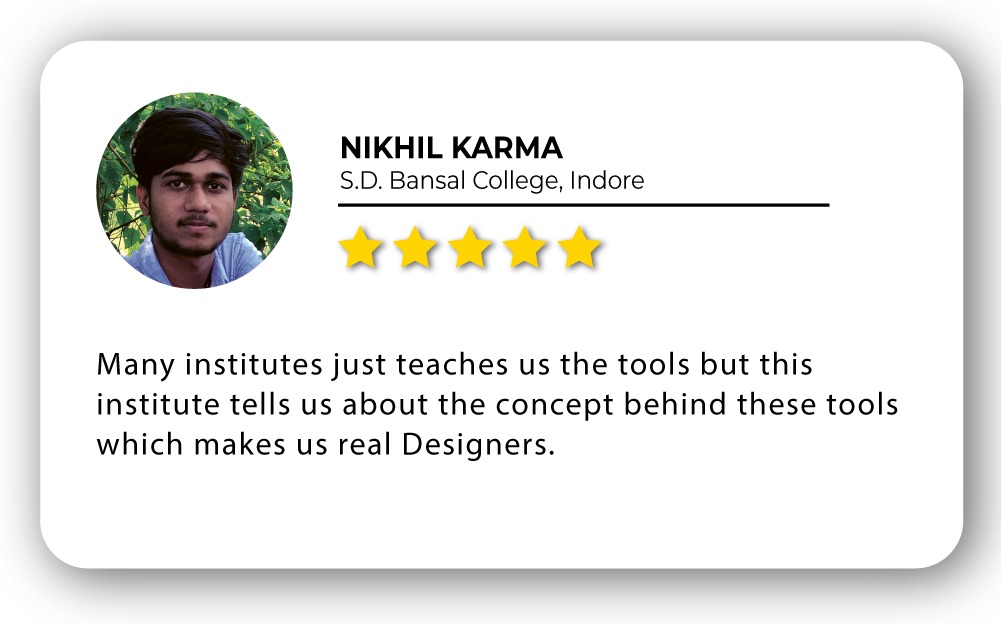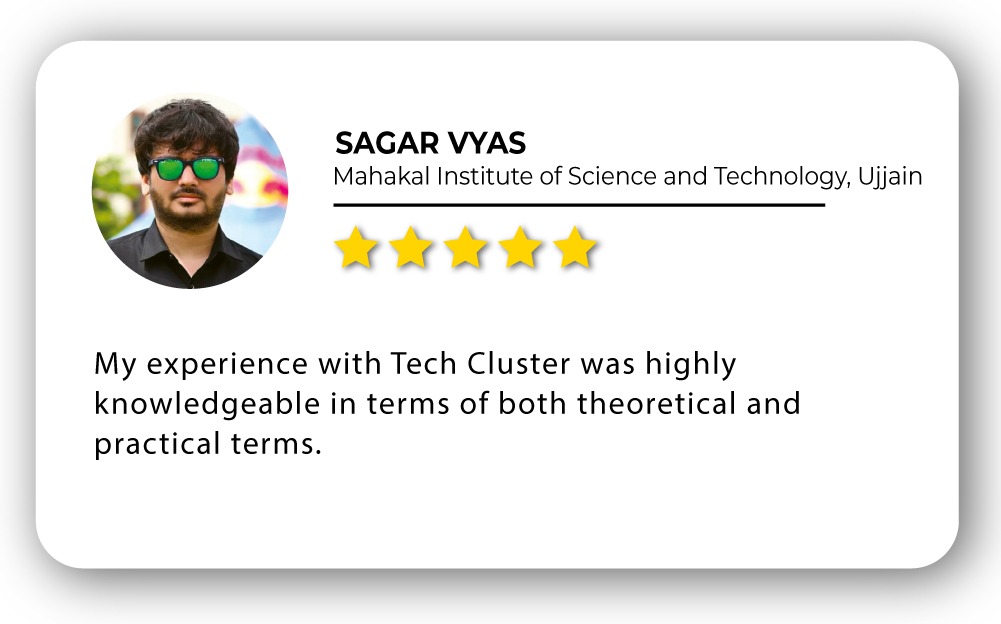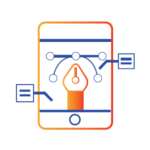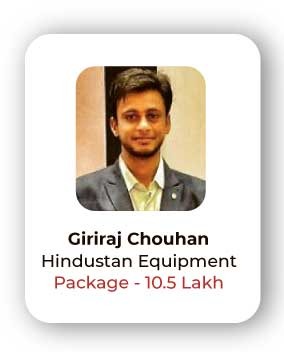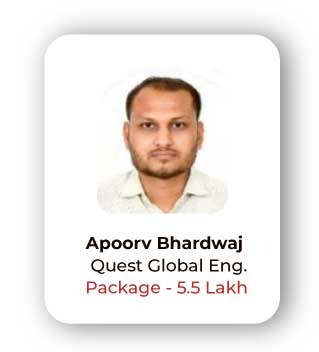
AR/VR Training in India
- Real-Time Experts Sessions
- LIVE Project
- Certification
- Affordable Fees
- Flexibility
- Placement Support
AR/VR is an excellent tool to enhance work processes, workflows and improve the training of the workforce. The 3D visualization and real-time access to information and support make decision-making easier. This also helps simplify tough processes, reduce pressure on workers, and improve their efficiency. AR/VR helps companies meet customers’ specific needs and brings in a higher level of innovation and engagement. Though this technology was initially intended for the younger generation, it has developed a lot and now finds its use cases in the industrial sector. And companies that are willing to act now and embrace this technology.
Tech Cluster is an institute which provides AR/VR in Indore and offers chances to avail a great opportunity to learn the tool from basic to advanced level. Our expert faculties cover all the important factors of AR/VR Training for beginners and intermediates. With our expert guidance students can excel in their career and earn good. After which you can find good opportunities in MNC.
Animation & VFX Design
| AR(Augmented Reality)/VR(Virtual Reality) |
Course Highlights:
AR/VR Foundation :
- Introduction to AR/VR
- The basics of AR/VR functionality
- Augmented Reality vs. Virtual Reality
- Types of AR
- Types of VR
Duration :
- 45 Hours Theory
- 45 Hours Practical
- 20 Hours Project work
Technical Features:
Introduction to AR/VR
AR- Augmented reality is an interactive experience that enhances the real world with computer-generated perceptual information. Using software, apps, and hardware such as AR glasses, augmented reality overlays digital content onto real-life environments and objects. This enriches the user experience and turns one’s immediate surroundings into an interactive learning environment which is particularly valuable in manufacturing and Industry 4.0 processes.
VR-Virtual reality, also known as VR, is a three-dimensional, computer-generated environment which can be explored and interacted with by a user. Mainstream interest in virtual reality grew with the development of VR headsets and platforms. As the practical uses of virtual reality continue to expand, professionals who want to enter the field can find themselves immersed in a new world of simulation.

The basics of AR/VR functionality
Augmented Reality(AR)
- Augmented reality (AR) involves overlaying visual, auditory, or other sensory information onto the real world to enhance one’s experience.
- Retailers and other companies can use augmented reality to promote products or services, launch novel marketing campaigns, and collect unique user data.
- Unlike virtual reality, which creates its own cyber environment, augmented reality adds to the existing world as it is.
Virtual Reality(VR)
Immersive experience creation mimics how the eye and brain form visuals. Human eyes are about three inches apart and therefore form two slightly different views. The brain fuses those views to create a sense of depth or stereoscopic display.
VR applications replicate that phenomenon with a pair of exact images from two different perspectives. Instead of a single image covering the entire screen, it shows two identical pictures made to offset the view for each eye. VR technology fools the viewer’s brain into perceiving a sense of depth and accept the illusion of a multi-dimensional image.
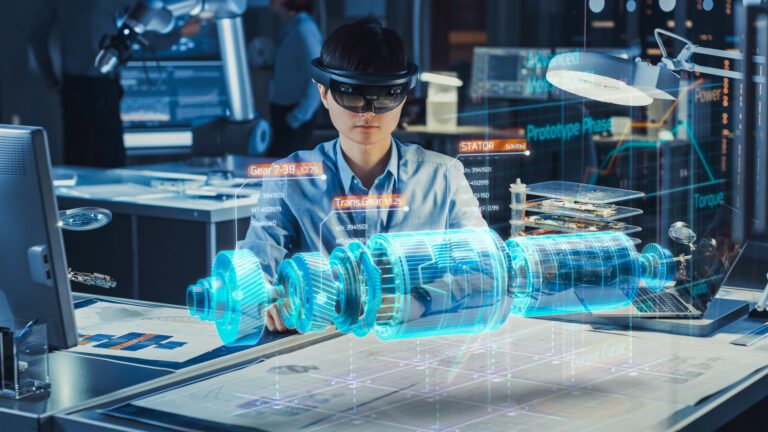

Augmented Reality vs. Virtual Reality
Augmented reality and virtual reality are often confused, so let’s clarify. Augmented reality uses the existing real-world environment and puts virtual information—or even a virtual world—on top of it to enhance the experience. For example, think of Pokémon Go, where users are searching in their real-life neighborhoods for animated characters that pop up on their phone or tablet. In the NFL, broadcasters use AR technology to better analyze plays.
In contrast, virtual reality immerses users into an entirely different environment, typically a virtual one created and rendered by computers. For example, virtual reality users may be immersed in an animated scene or a digital environment. Virtual reality can also be used to photograph an actual local location and embed it in a VR app. Through a virtual reality headset, someone can walk around Italy as if they were actually there.
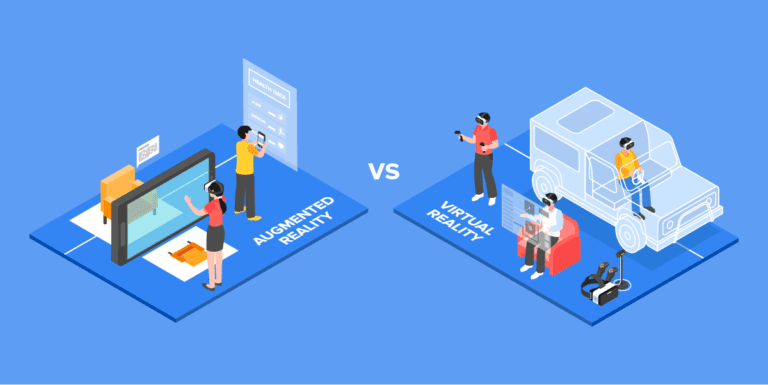
Types of AR
- Marker-based AR-A marker, which is a special visual object like a special sign or anything, and a camera are used to initiate the 3D digital animations. The system will calculate the orientation and position of the market to position the content effectively.
- Marker-less AR-It is used in events, business, and navigation apps, for instance, the technology uses location-based information to determine what content the user gets or finds in a certain area. It may use GPS, compasses, gyroscopes, and accelerometers as can be used on mobile phones.
- Project-based AR-This kind uses synthetic light projected on the physical surfaces to detect the interaction of the user with the surfaces. It is used on holograms like in Star Wars and other sci-fi movies.
Superimposition-based AR-In this case, the original item is replaced with an augmentation, fully or partially. The below example is allowing users to place a virtual furniture item over a room image with a scale on the IKEA Catalog app.
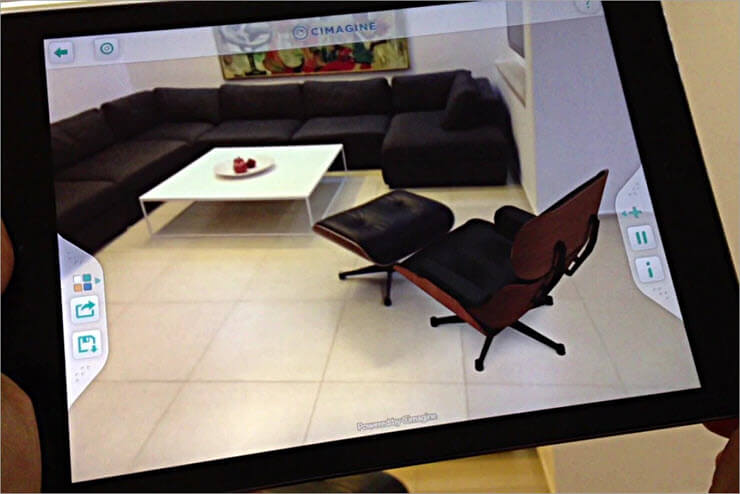

Types of VR
- Non-Immersive Virtual Reality-Non-immersive virtual experiences are often overlooked as a virtual reality category because it’s already so commonly used in everyday life. This technology provides a computer-generated environment, but allows the user to stay aware of and keep control of their physical environment.
- Semi-Immersive Virtual Reality-Semi-immersive virtual experiences provide users with a partially virtual environment. It will still give users the perception of being in a different reality when they focus on the digital image, but also allows users to remain connected to their physical surroundings.
- Fully-Immersive Virtual Reality-Fully-immersive simulations give users the most realistic simulation experience, complete with sight and sound. To experience and interact with fully-immersive virtual reality, the user needs the proper VR glasses or a head mount display (HMD). VR headsets provide high-resolution content with a wide field of view. The display typically splits between the user’s eyes, creating a stereoscopic 3D effect, and combines with input tracking to establish an immersive, believable experience.

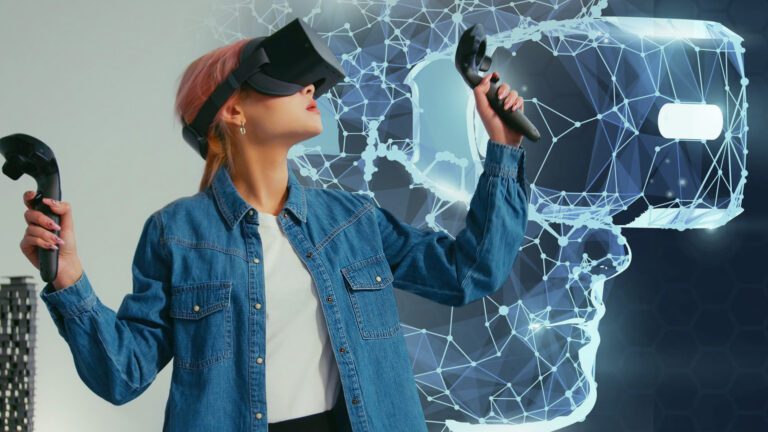
Upcoming Batches
Certifications
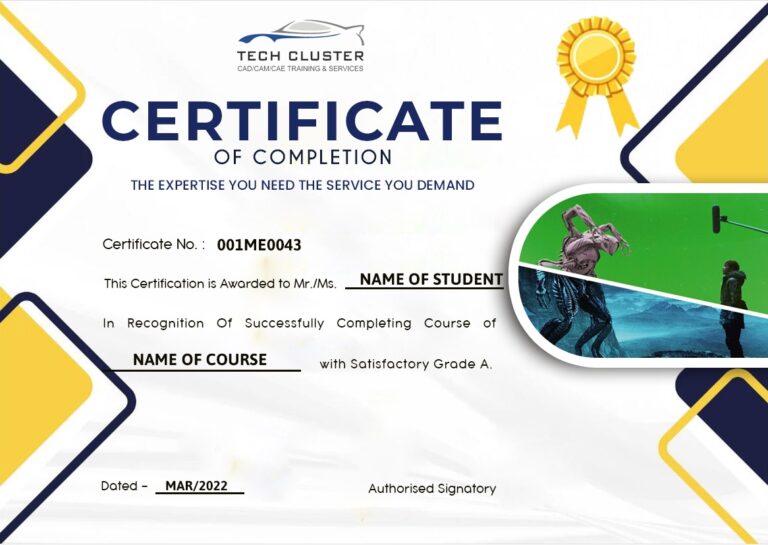
AR/VR Certification Training
About AR/VR Certification Training in Indore at Tech Cluster
Reviews
